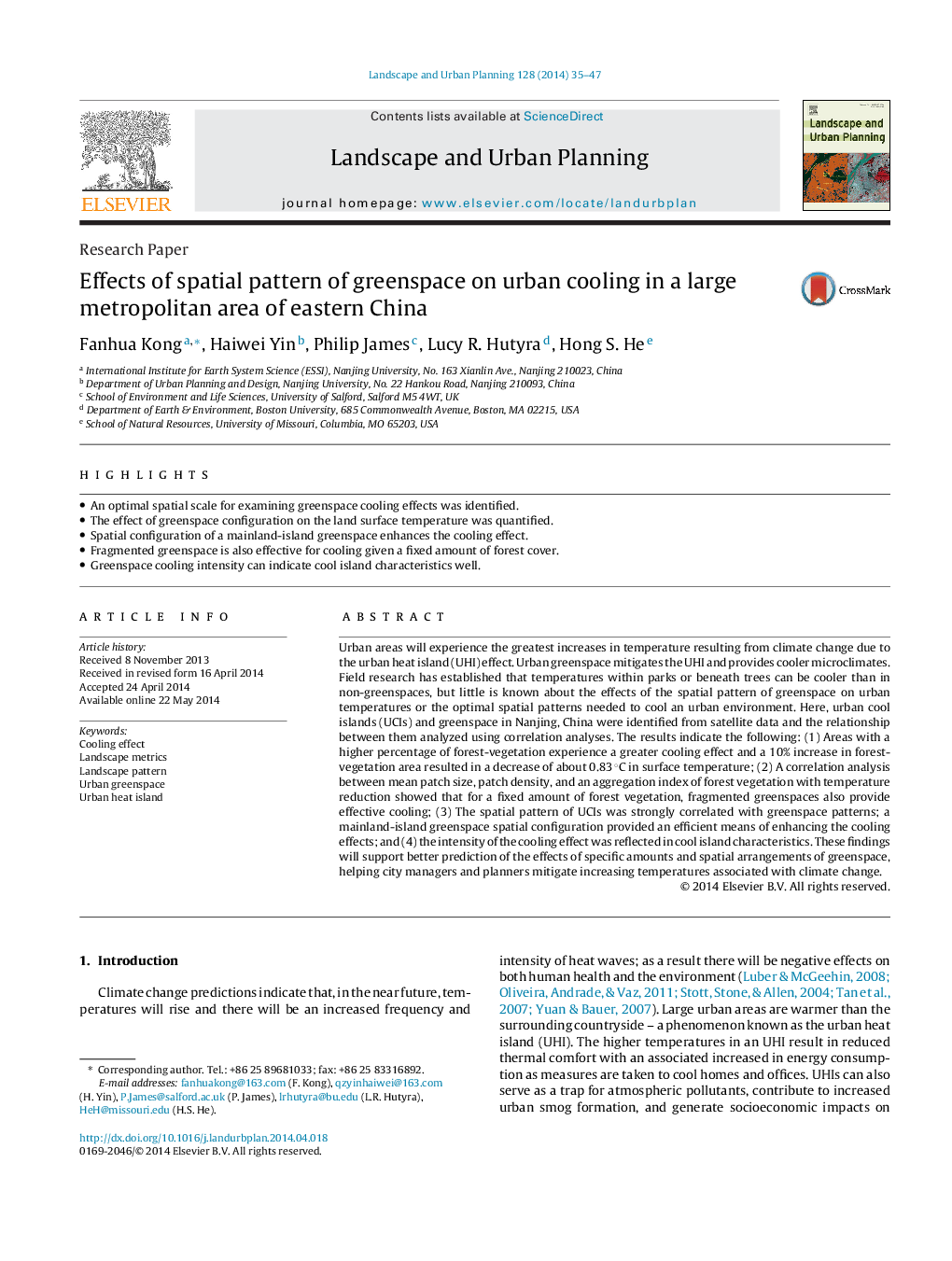| کد مقاله | کد نشریه | سال انتشار | مقاله انگلیسی | نسخه تمام متن |
|---|---|---|---|---|
| 1049217 | 1484630 | 2014 | 13 صفحه PDF | دانلود رایگان |
• An optimal spatial scale for examining greenspace cooling effects was identified.
• The effect of greenspace configuration on the land surface temperature was quantified.
• Spatial configuration of a mainland-island greenspace enhances the cooling effect.
• Fragmented greenspace is also effective for cooling given a fixed amount of forest cover.
• Greenspace cooling intensity can indicate cool island characteristics well.
Urban areas will experience the greatest increases in temperature resulting from climate change due to the urban heat island (UHI) effect. Urban greenspace mitigates the UHI and provides cooler microclimates. Field research has established that temperatures within parks or beneath trees can be cooler than in non-greenspaces, but little is known about the effects of the spatial pattern of greenspace on urban temperatures or the optimal spatial patterns needed to cool an urban environment. Here, urban cool islands (UCIs) and greenspace in Nanjing, China were identified from satellite data and the relationship between them analyzed using correlation analyses. The results indicate the following: (1) Areas with a higher percentage of forest-vegetation experience a greater cooling effect and a 10% increase in forest-vegetation area resulted in a decrease of about 0.83 °C in surface temperature; (2) A correlation analysis between mean patch size, patch density, and an aggregation index of forest vegetation with temperature reduction showed that for a fixed amount of forest vegetation, fragmented greenspaces also provide effective cooling; (3) The spatial pattern of UCIs was strongly correlated with greenspace patterns; a mainland-island greenspace spatial configuration provided an efficient means of enhancing the cooling effects; and (4) the intensity of the cooling effect was reflected in cool island characteristics. These findings will support better prediction of the effects of specific amounts and spatial arrangements of greenspace, helping city managers and planners mitigate increasing temperatures associated with climate change.
Journal: Landscape and Urban Planning - Volume 128, August 2014, Pages 35–47
